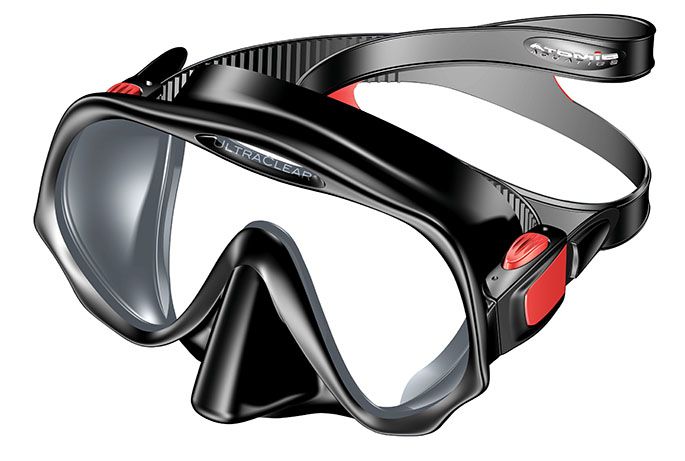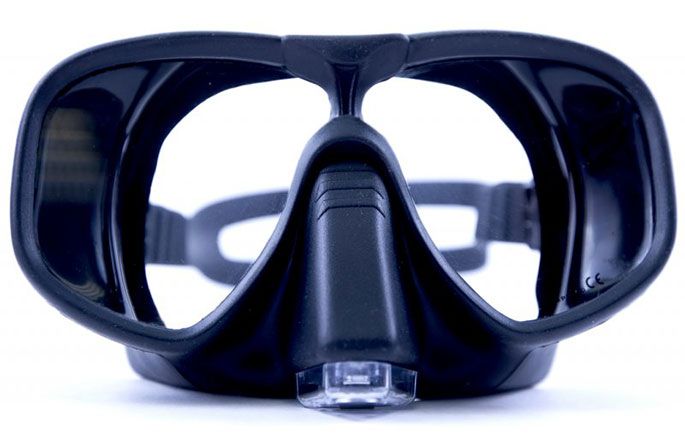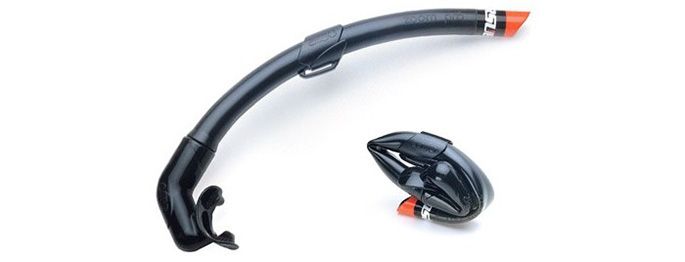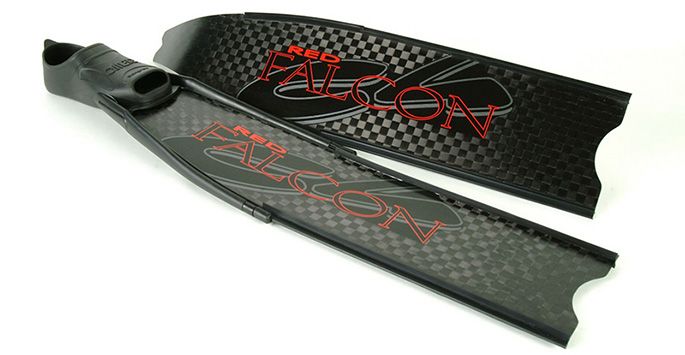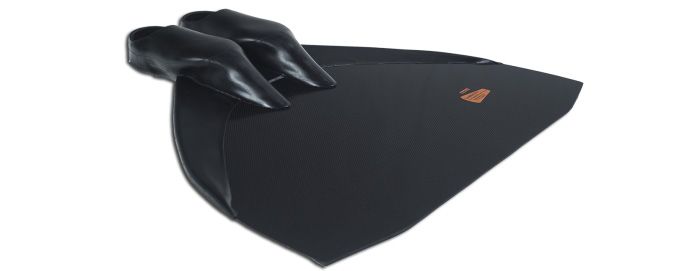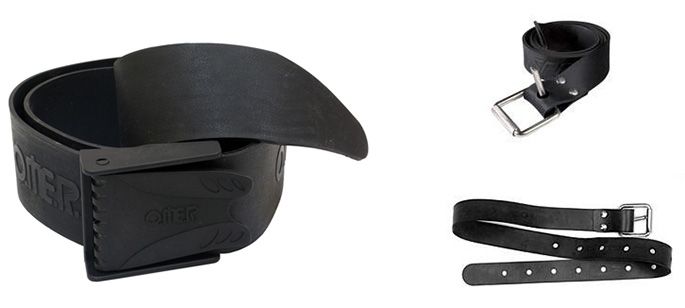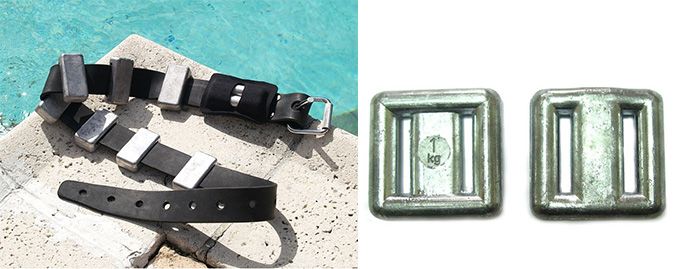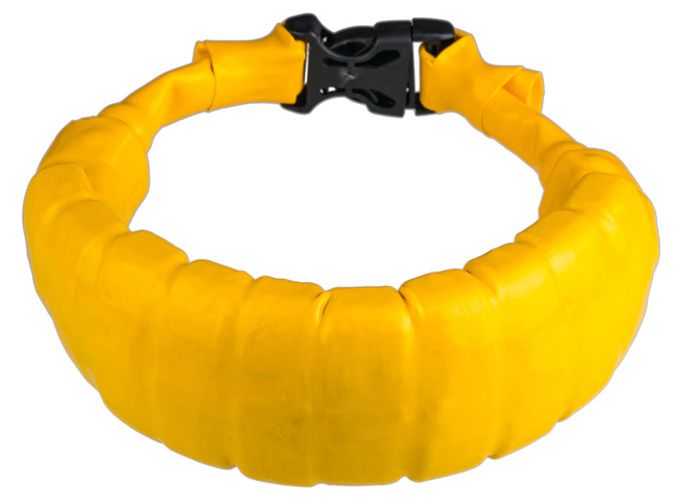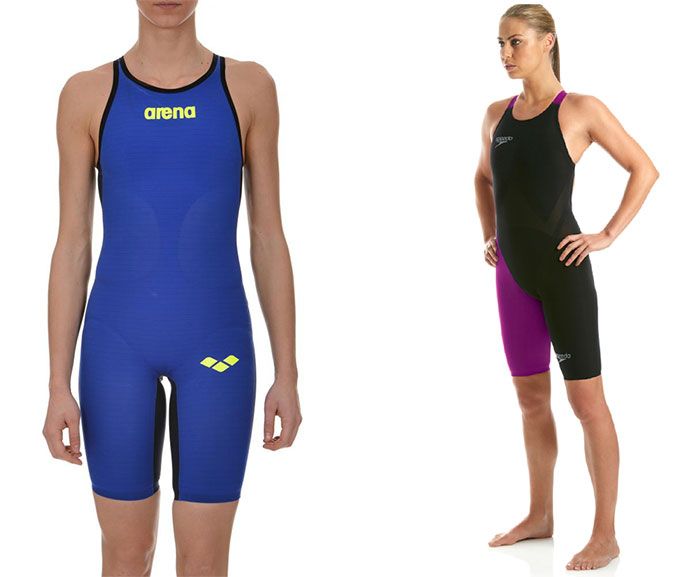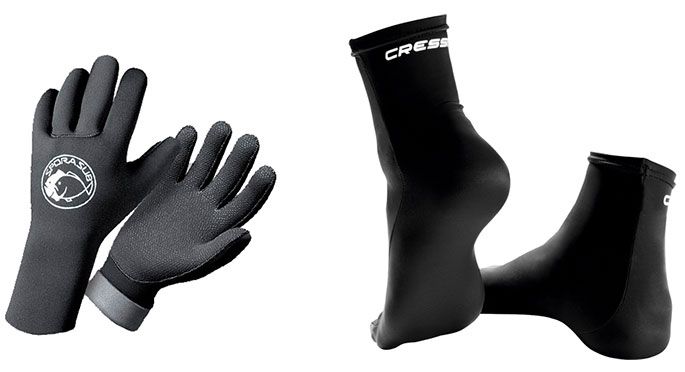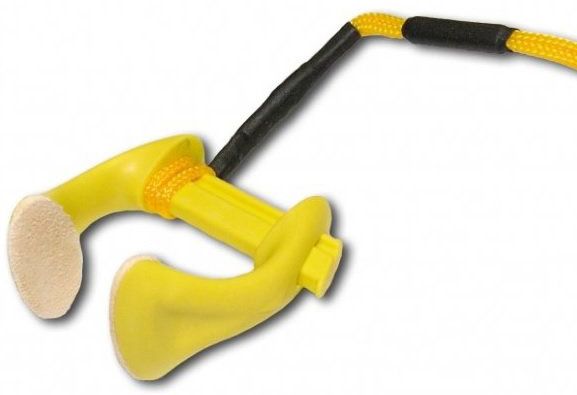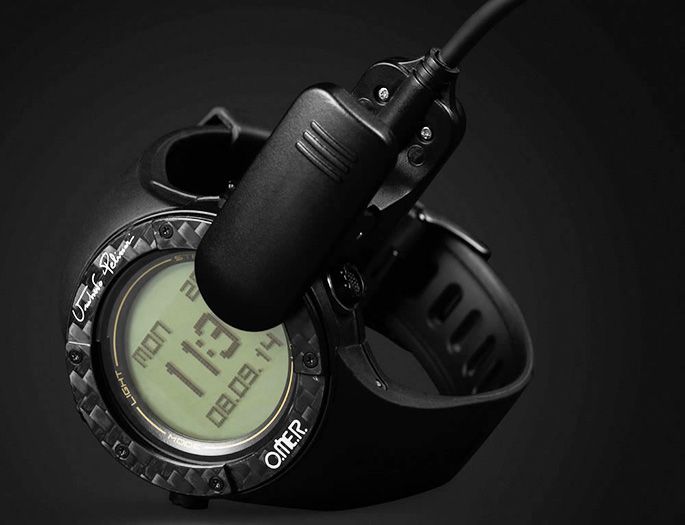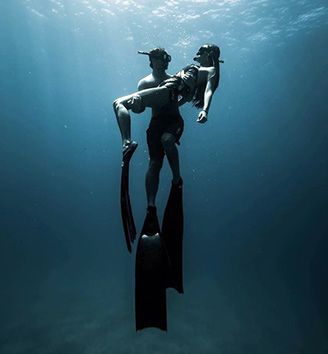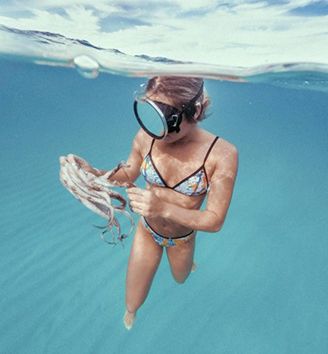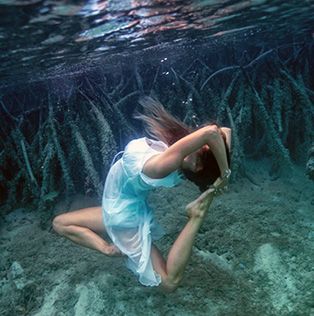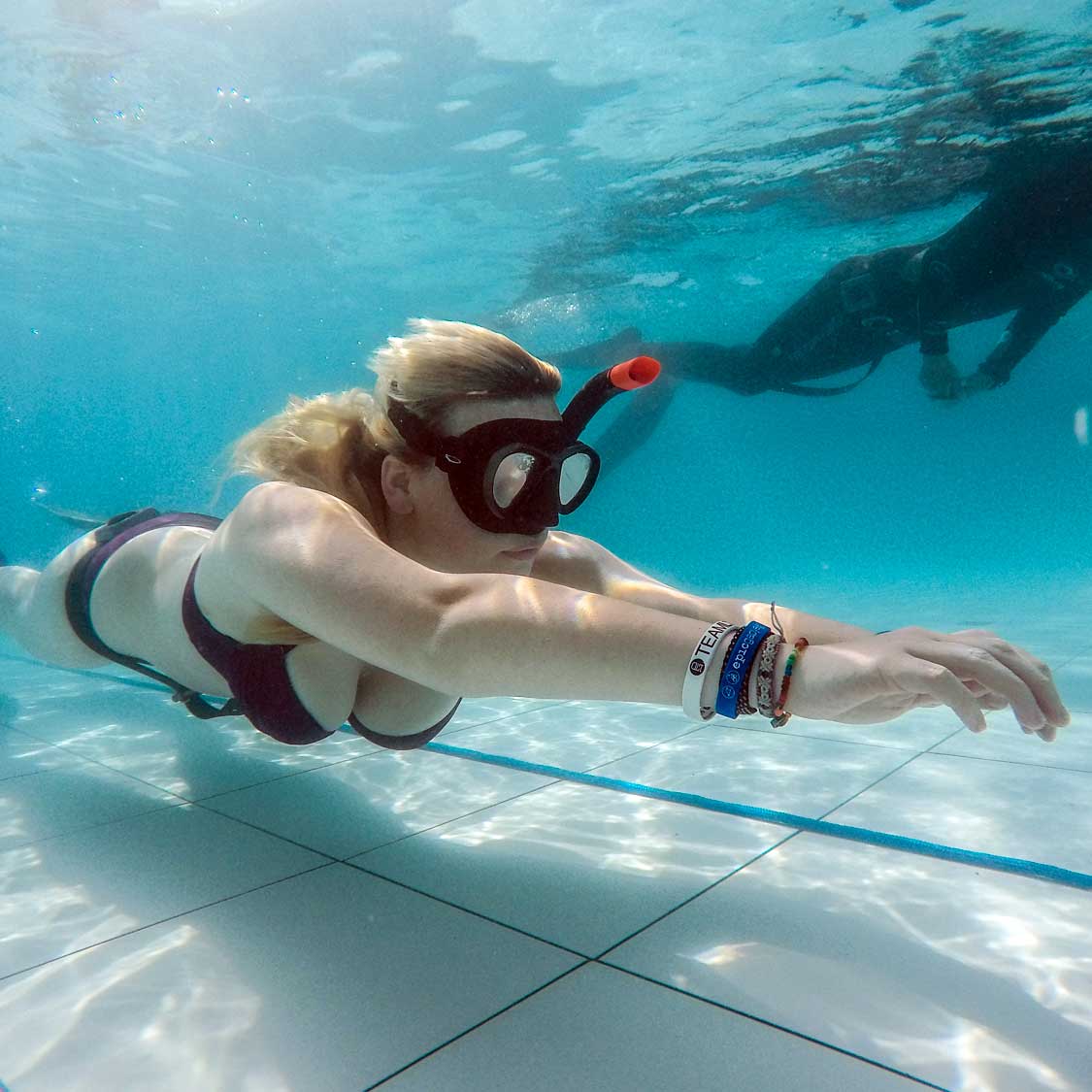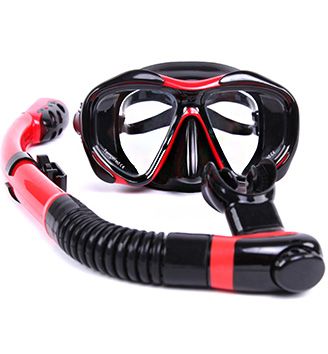 Freediving Equipment
Freediving Equipment
Let’s discuss in detail the important aspects of freediving equipment. We will examine both the essential items like masks, snorkels, and fins, as well as specialized equipment for professionals.
Unlike scuba diving, the mandatory gear for freedivers is much less extensive and significantly more affordable. With proper care, good-quality freediving equipment will last you a lifetime.
We’ll begin the review with freediving masks, as this piece of gear is absolutely indispensable.
Freediving Mask
The variety of freediving masks is vast, catering to every budget and preference. The challenge in choosing a mask lies in the need to try it on before purchasing. There are no universal masks that fit all face shapes perfectly.
A simple way to check if a mask fits you is to press it against your face and inhale through your nose. The mask should “stick” to your face without any help from the straps and should not fall off even with rapid head movements.
Beyond comfort, there are certain features you should consider when selecting a freediving mask:
Small Volume. The smaller the air volume inside the mask, the less air from your lungs is required to equalize pressure by blowing into the mask. This is a critical factor for deep freediving and spearfishing.
Clear Lenses. Some masks, such as those for spearfishing, may have tinted or reflective lenses. Freedivers need clear lenses so their partners can see their eyes clearly and assess their physical condition. Flat lenses made of tempered glass (marked with “T” Tempered) provide high-quality visibility and durability. Plastic lenses allow for flexible mask shapes that hug the face, but they are less durable and may distort visibility.
Nose Pocket or Shaped Protuberance. This feature allows you to equalize the pressure in the mask and prevents barotrauma to the eyes (face squeeze, where the capillaries in the eyeballs burst). Nose pockets typically have some extra room. If you feel slight discomfort near the bridge of your nose, try a different mask.
Silicone Skirt or Seal. A good seal around the face is ensured by a silicone skirt. Silicone is hypoallergenic, durable, and adapts well to the face’s shape. Rubber skirts are almost nonexistent in modern models. The color of the skirt doesn’t matter, except for spearfishing, where hunters prefer dark masks with anti-glare ridges and lenses.
Purging Valve. A valve on the mask helps remove moisture from the space inside the mask without using your hands. Under ideal conditions, a mask with a valve is more convenient, but if a grain of sand or seaweed gets into it, problems can arise. Learning to clear a mask without a valve is essential regardless. A freediving mask with a valve typically has a larger internal volume, which freedivers should avoid.
Prescription Lenses. There are masks with prescription lenses and interchangeable lenses available for purchase. You can insert and replace lenses in specialized masks on your own. Interestingly, there are no restrictions on freediving with contact lenses.
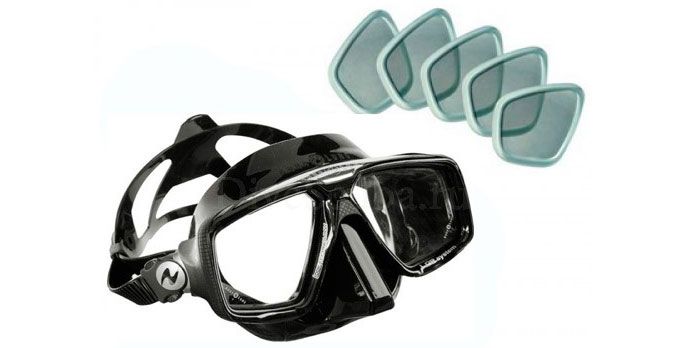 Freediving Mask with Prescription Lenses
Freediving Mask with Prescription Lenses
Ear Protection. Masks with “ear pockets” are designed for freedivers with perforated eardrums or other ear problems but are not the most convenient equipment. These are often purchased by beginner divers but rarely remain in use. The mask’s internal volume increases significantly in these models, making them cumbersome to wear under a wetsuit. To ensure the “ear pockets” are watertight, you may need to trim your hair. These types of masks include additional components, which often break.
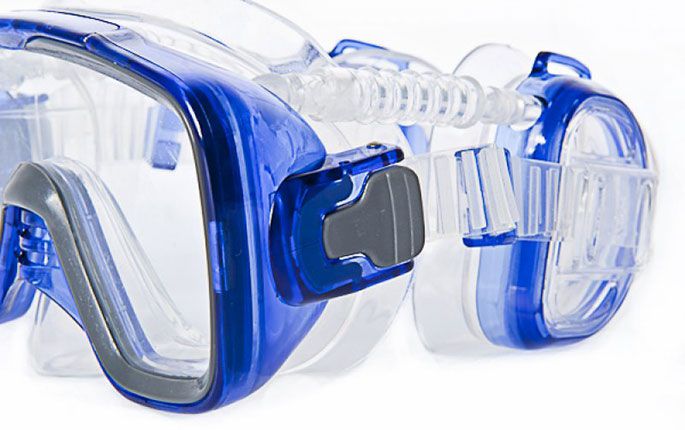 Freediving Mask with Ear Protection
Freediving Mask with Ear Protection Freediving Mask with Ear Protection
Freediving Mask with Ear Protection
High-Tech Masks. Today’s market offers freediving masks with features like built-in flashlights, LED displays, and HD cameras. However, the ergonomics of such high-tech masks are still underwhelming, and their price does not justify their convenience or reliability. The internal space of these masks is often excessively large, “big enough to fit half of China.”
Freediving Snorkel (or Snorkeling Tube)
[Continued in another section]… A snorkel for freediving allows you to breathe without lifting your head out of the water, thereby saving energy. A freediving snorkel should have the simplest design possible, without purge valves, splash guards, or other enhancements. Although it can now be quite difficult to find a snorkel without a drain valve. The simplicity of use and proper hydrodynamics are the most important criteria when choosing a snorkel for swimming. Additional features to consider include:
- A soft silicone mouthpiece. You should barely notice it in your mouth.
- A simple, slightly curved shape.
- A comfortable attachment system to your mask structure.
- A small offset angle of the mouthpiece relative to the snorkel tube.
- Ribbed curves on the snorkel should be smooth on the inside. Internal ribbing creates air resistance and interferes with clearing water from the snorkel.
- Snorkel length. The shorter the snorkel, the less residual air will accumulate in it, and the easier it is to clear water from it. Ideally, the snorkel should be just above the top of your head.
Most modern snorkels are designed with previous shortcomings in mind, differing little in length and diameter and being quite suitable for use.
Freediving Fins
Freediving fins are a vast topic involving debates over materials, stiffness, shapes, and types. The two main types of fins are bifins and monofins. Bifins, or separate fins, are suitable for recreational freediving, duo diving, pool training, and learning the sport. Monofins are better suited for deep dives and covering long distances, requiring specific swimming techniques and skills.
Bifins
Bifins are the most popular choice in recreational freediving. They allow for easy maneuvering, are simpler to master, and make it quicker to assist a partner during a dive. Key features to consider include:
Length. Long fins offer more efficient hydrodynamics with less effort required from the swimmer. The balance between fin stiffness, your task, and physical ability is crucial. Freedivers typically opt for longer fins (70-85 cm).
Closed heel. Freediving bifins should have a closed heel, without straps or additional parts that could snag on seaweed or other divers. The size of the fins should be chosen considering neoprene socks, which help prevent chafing and provide insulation in colder waters.
Interchangeable blades. Buying fin foot pockets with interchangeable blades is a practical choice. Having 2-3 sets with varying stiffness levels is often sufficient.
Material. For freedivers and underwater hunters, a combination of rubber foot pockets with carbon or fiberglass blades is recommended. This mix of materials reduces energy expenditure while maintaining speed.
Stiffness. Fins come in three grades of stiffness, suited to different tasks: soft (light) for shallow dives, pool training, beginners, and recreational freediving; medium for underwater hunting and freediving; and hard for experienced divers with precise stroke techniques, suited for distances and depths. Stiffness is commonly marked with colors in increasing order: green, blue, gray, black.
Fin size. The size selection depends on the thickness of the neoprene socks, which are advisable under the fins. Hunters typically need thicker socks up to 10 mm, while freedivers in warm waters might use 1 mm socks or none at all.
When trying on fins, it’s a good idea to wear the most suitable pair for about 20 minutes—if your feet don’t cramp, they’re a good fit.
Monofin
The design of the monofin is inspired by nature. Freedivers who have mastered the monofin rarely return to bifins. The monofin is significantly faster and more efficient at depths, especially during breath-hold dives, as it allows your entire body to propel you swiftly through the water. However, maneuvering in a monofin can be quite challenging. Key features include:
Foot pockets. Monofins come with closed and open heels, ranging from very tight-fitting foot pockets to more comfortable ones, akin to those on bifins. Foot pockets for speed-oriented monofins are molded at a slight angle to the blade (10-15 degrees).
Stiffness. The stiffness of the blade and the angle of the foot pockets relative to the blade significantly affect specific tasks. Stiffness selection depends on your physical fitness and objectives. Medium stiffness allows for energetic movement in the water while still responding well to gentle, relaxed kicks.
Wings. Wing-like stabilizers reduce turbulence and provide stability. They are made from rubber or polyurethane, with varying shapes and placements across different models.
Weighted Systems for Freediving
Wetsuits have positive buoyancy. To counterbalance this and achieve neutral buoyancy at the desired depth, a special weight system has been developed, differing in design for recreational freedivers, hunters, and professional athletes. The weights are selected such that the diver’s body remains stable in a horizontal position. Weight systems for recreational freediving typically include a belt and a neck weight. Selection criteria include: Elastic Rubber Weight Belt. The popular nylon belts used by scuba divers are not suitable for freediving—they interfere with proper breathing and tend to ride up and down the hips when loosened. In some cases, a nylon belt can slip during a dive and injure the freediver’s ribs. A rubber belt stays securely in place.
Belt Buckle. There are two common types of buckles: Marseille and clamp-style. The tongue-style “Marseille” buckle is slightly offset, which allows the tongue to spring back. This design facilitates quick release—simply pull the free end of the belt. However, rubber belts with this type of buckle wear out quickly, especially when used with thick wetsuits that require greater buoyancy compensation, as the heavy weights can tear through the rubber. Clamp-style buckles are more reliable but cannot be removed with a single motion.
Small Weights. Weight should be distributed evenly using small weights.
Neck Weight. Crafted manually, the neck weight complements the weight belt by compensating for uneven buoyancy in freedivers, thereby increasing the ease of streamlined movement through the water.
Wetsuit
Wetsuits serve several purposes:
- Maintaining body temperature;
- Protecting skin (from UV rays, coral, jellyfish);
- Enhancing hydrodynamic efficiency in water.
Heat loss occurs 25 times faster in water compared to air. Hypothermia can set in within 1.5 hours at 30°C (86°F), and this time reduces with constant diving.
In a pool, wetsuits streamline the body, improving hydrodynamics and conserving energy. Beginners can use surfing wetsuits or semi-dry diving wetsuits.
Key factors to consider when choosing a wetsuit for freediving:
Suit Type. Among dry, semi-dry, and wet suits, freedivers prefer wet suits because they allow maximum freedom of movement. Contact with water is limited to the small amount absorbed by the pores of the material. Thermal insulation is provided by air bubbles trapped in the material’s closed cells.
Materials. Wet suits are made from lycra (for water temperatures of 27–30°C) and neoprene (for warm, temperate, and cold waters). Lycra is elastic and resistant to mechanical damage but offers no thermal protection. Neoprene comes in various thicknesses—2 mm, 3 mm (24–28°C), 5 mm (18–25°C), 7 mm (11–19°C), and 9 mm—for adaptability to different water temperatures.
Inner Lining or Coating. Freediving wetsuits made from neoprene may feature open cells, closed cells, or linings in nylon or lycra. Pure neoprene has slightly better hydrodynamics but is less durable than suits with a nylon lining. Nylon can act as an additional layer between the porous material and the skin. There are many types of layers, coatings, and linings, each designed for different purposes, making it challenging to find a universal wetsuit.
Suit Design. Wet suits come in separate pieces, short styles, or monolithic designs. Two-piece suits with a hood and open-cell construction are the most popular among freedivers.
Custom Tailoring. The practice of tailoring wetsuits to individual measurements is well-developed worldwide. Even Italian craftsmen are readily accessible for custom orders, a common practice among freedivers. Russia also has excellent wetsuit tailors. Prices for custom suits are not significantly higher than factory models (about a 10% price difference).
Pool Training Suit. Pool suits generally lack a hood (a swim cap is used instead) and are made of thin neoprene with a nylon lining or lycra.
Sealing. Wetsuits often feature seals made from pure neoprene at the wrists and ankles. These neoprene seals greatly reduce water intrusion into the suit.
Gloves and Socks
Gloves and socks for freediving primarily protect the extremities from hypothermia. Gloves also prevent cuts, while socks shield against chafing from the rubber foot pockets of fins.
Material combinations include:
- Nylon-Neoprene-Nylon;
- Neoprene with closed cells on the outside and open cells on the inside;
- Nylon on the outside and neoprene with open cells on the inside;
- Bare neoprene on the outside and nylon on the inside.
The palms of gloves and the soles of socks are often reinforced for added durability.
Nose Clip and Fluid Goggles (“Liquid” Goggles)
These goggles are specially designed for freedivers. Their uniquely constructed lenses are filled with a saline solution, enabling better underwater vision. For freedivers, saving the air needed to equalize the mask is essential—fluid goggles eliminate the need for air to stabilize the lenses. When using goggles instead of a mask, it’s recommended to use a nose clip, as it frees up a hand during equalization.
Freediving Computer
A wrist computer for freediving helps during training and monitors several important parameters during dives. Diving watches can also be useful. Key features to pay attention to:
Recording the interval between dives. The device tracks how long you rested on the surface. This is a crucial point for preventing decompression when a diver rests too little between dives.
Current depth. It also displays neutral buoyancy in relation to the achieved depth.
Maximum depth. The computer will alert you upon reaching the preset depth limit, so you don’t have to constantly check the depth yourself.
Water temperature. The temperature is recorded at specified intervals as you dive. The computer’s memory is designed to store vast amounts of data, allowing you to compare records over an entire year.
Recording current time and dive duration.
Countdown timer and stopwatch.
Remember that a computer does not replace a buddy—diving alone is unacceptable!
